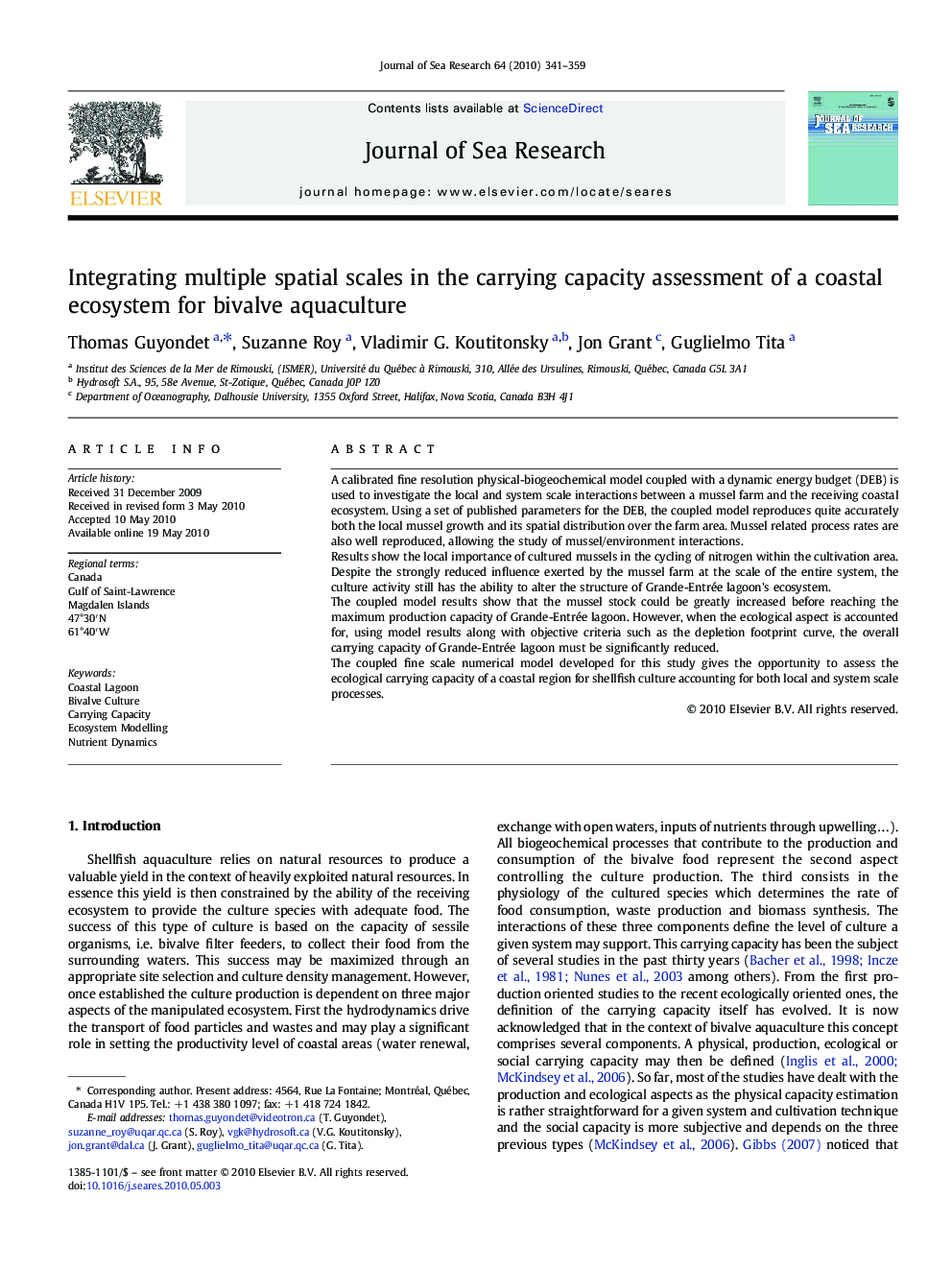| Article ID | Journal | Published Year | Pages | File Type |
|---|---|---|---|---|
| 4550183 | Journal of Sea Research | 2010 | 19 Pages |
A calibrated fine resolution physical-biogeochemical model coupled with a dynamic energy budget (DEB) is used to investigate the local and system scale interactions between a mussel farm and the receiving coastal ecosystem. Using a set of published parameters for the DEB, the coupled model reproduces quite accurately both the local mussel growth and its spatial distribution over the farm area. Mussel related process rates are also well reproduced, allowing the study of mussel/environment interactions.Results show the local importance of cultured mussels in the cycling of nitrogen within the cultivation area. Despite the strongly reduced influence exerted by the mussel farm at the scale of the entire system, the culture activity still has the ability to alter the structure of Grande-Entrée lagoon's ecosystem.The coupled model results show that the mussel stock could be greatly increased before reaching the maximum production capacity of Grande-Entrée lagoon. However, when the ecological aspect is accounted for, using model results along with objective criteria such as the depletion footprint curve, the overall carrying capacity of Grande-Entrée lagoon must be significantly reduced.The coupled fine scale numerical model developed for this study gives the opportunity to assess the ecological carrying capacity of a coastal region for shellfish culture accounting for both local and system scale processes.
